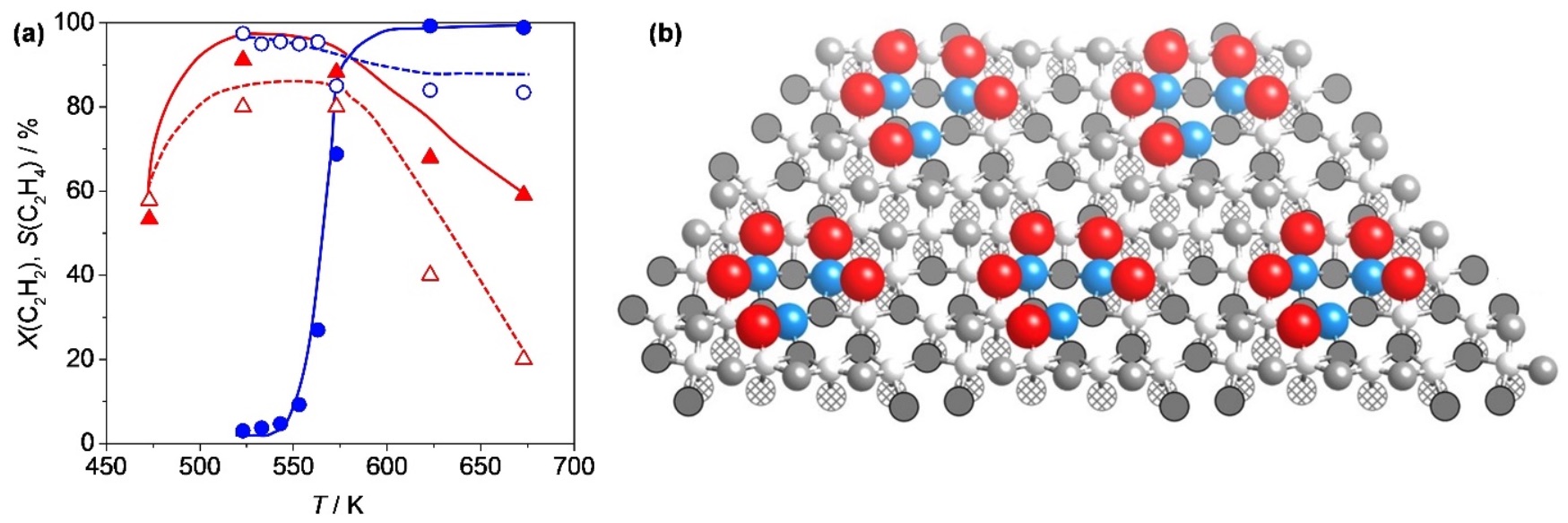Single ensemble catalysis: acetylene semi-hydrogenation on indium oxide
Despite increasing resource scarcity and environmental awareness, industrial hydrogenation catalysts still heavily rely on expensive noble metals such as palladium or platinum modified with toxic selectivity enhancers.1 Among intensive efforts to address this, one approach involves the untapped potential of metal oxides. In this regard, cerium oxide emerged as an efficient catalyst for the semi-hydrogenation of acetylene,2 an important reaction for the purification of olefin streams for downstream polymerization processes. To date, no other metal oxide has been identified that selectively catalyzes this reaction, leaving ample room for a more extensive investigation on the abilities of oxides in hydrogenation catalysis. Here, we have explored the potential of indium oxide to hydrogenate acetylene, uncovering a remarkable 85% selectivity to ethylene at full conversion in continuous-flow tests at ambient pressure (Figure 1a). Detailed analyses by temperature-programmed reduction with H2, in situ diffuse reflectance infrared Fourier transform and Raman spectroscopy, transmission electron microscopy, and density functional theory link the excellent hydrogenation performance with a surface reconstruction during the reaction leading to the creation of well-defined In3O5 sites, consisting of an oxygen vacancy, an In trimer and adjacent oxygen atoms, where C2H2 and H2 can co-adsorb and react (Figure 1b). This unusual configuration, which we have named ‘single ensemble’, comprises a new type of active site in hydrogenation catalysis.

Figure 1 (a) Acetylene conversion (solid symbols) and selectivity to ethylene (open symbols) versus temperature over In2O3 (blue) and CeO2 (red). Conditions: H2:C2H2 = 30, t = 1 s, P = 1 bar. (b) Oxygen vacancy formation on In2O3(111) under reaction conditions leads to the development of In3O5 single ensembles. In and O atoms of the ensemble are colored in blue and red, respectively.
[1] G. Vilé, D. Albani, N. Almora-Barrios, N. López, J. Pérez-Ramírez, ChemCatChem 2016, 8, 21.
[2] G. Vilé, B. Bridier, J. Wichert, J. Pérez-Ramírez, Angew. Chem. Int. Ed. 2012, 51, 8620.